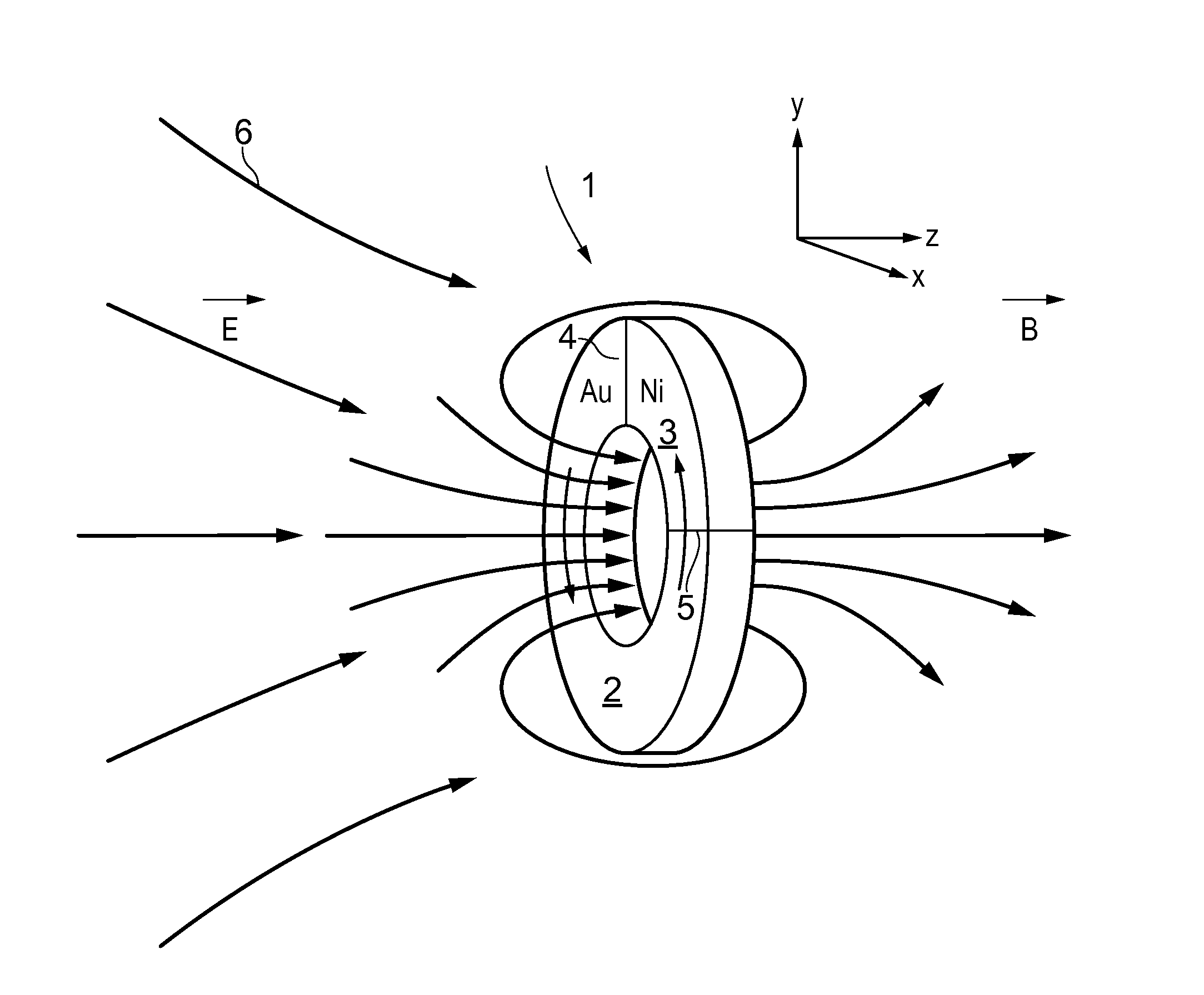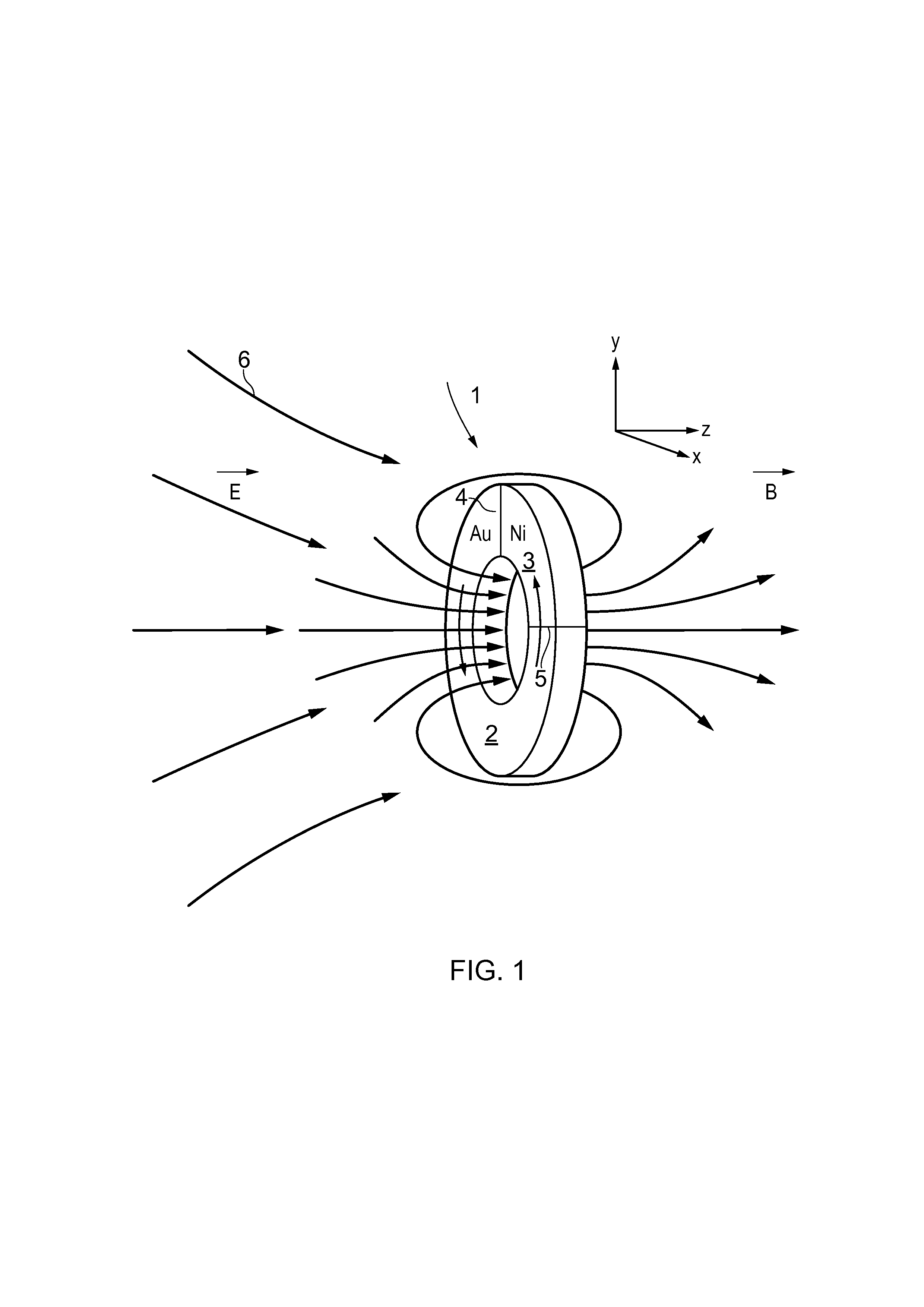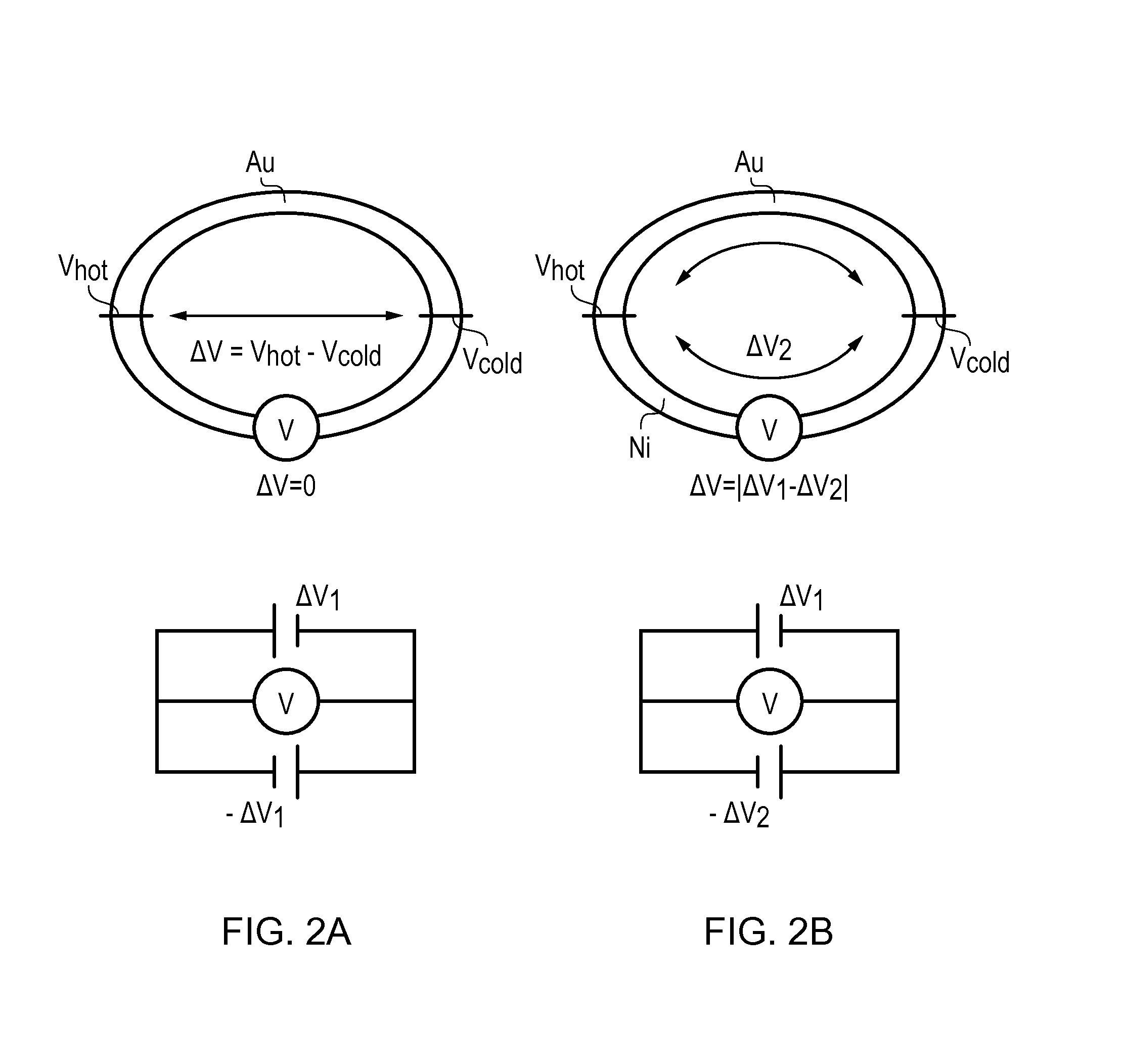Magnetic field generator
a magnetic field and generator technology, applied in the field of magnetic field generators, can solve the problem of performance limitation of superparamagnetic effect, and achieve the effect of improving data storage density and magnetic field strength
- Summary
- Abstract
- Description
- Claims
- Application Information
AI Technical Summary
Benefits of technology
Problems solved by technology
Method used
Image
Examples
Embodiment Construction
[0045]FIG. 1 is a conceptual representation of a device for generating a magnetic field. The principal active structural element of the magnetic field generator is a conductive ring 1 that forms a closed current path or loop made of materials that support an electron (or hole) plasma. Most metallic materials are suitable, since the electrons in metals generally form a plasma, the associated quasi-particle being referred to as a plasmon. The metallic ring 1 has first and second angular portions 2 and 3 of first and second materials which have first and second Seebeck coefficients which are different. The first and second materials are Au and Ni in the illustrated example. The first and second materials interface at first and second junctions 4 and 5 which are ohmic and are separated angularly in the ring by 90 degrees. The metallic ring is made of a 270° arc of the first material, gold in the example, and 90° arc of the second material, nickel in the example, the ring of the two mate...
PUM
| Property | Measurement | Unit |
|---|---|---|
| temperature | aaaaa | aaaaa |
| temperature | aaaaa | aaaaa |
| temperature | aaaaa | aaaaa |
Abstract
Description
Claims
Application Information
 Login to View More
Login to View More - R&D
- Intellectual Property
- Life Sciences
- Materials
- Tech Scout
- Unparalleled Data Quality
- Higher Quality Content
- 60% Fewer Hallucinations
Browse by: Latest US Patents, China's latest patents, Technical Efficacy Thesaurus, Application Domain, Technology Topic, Popular Technical Reports.
© 2025 PatSnap. All rights reserved.Legal|Privacy policy|Modern Slavery Act Transparency Statement|Sitemap|About US| Contact US: help@patsnap.com



